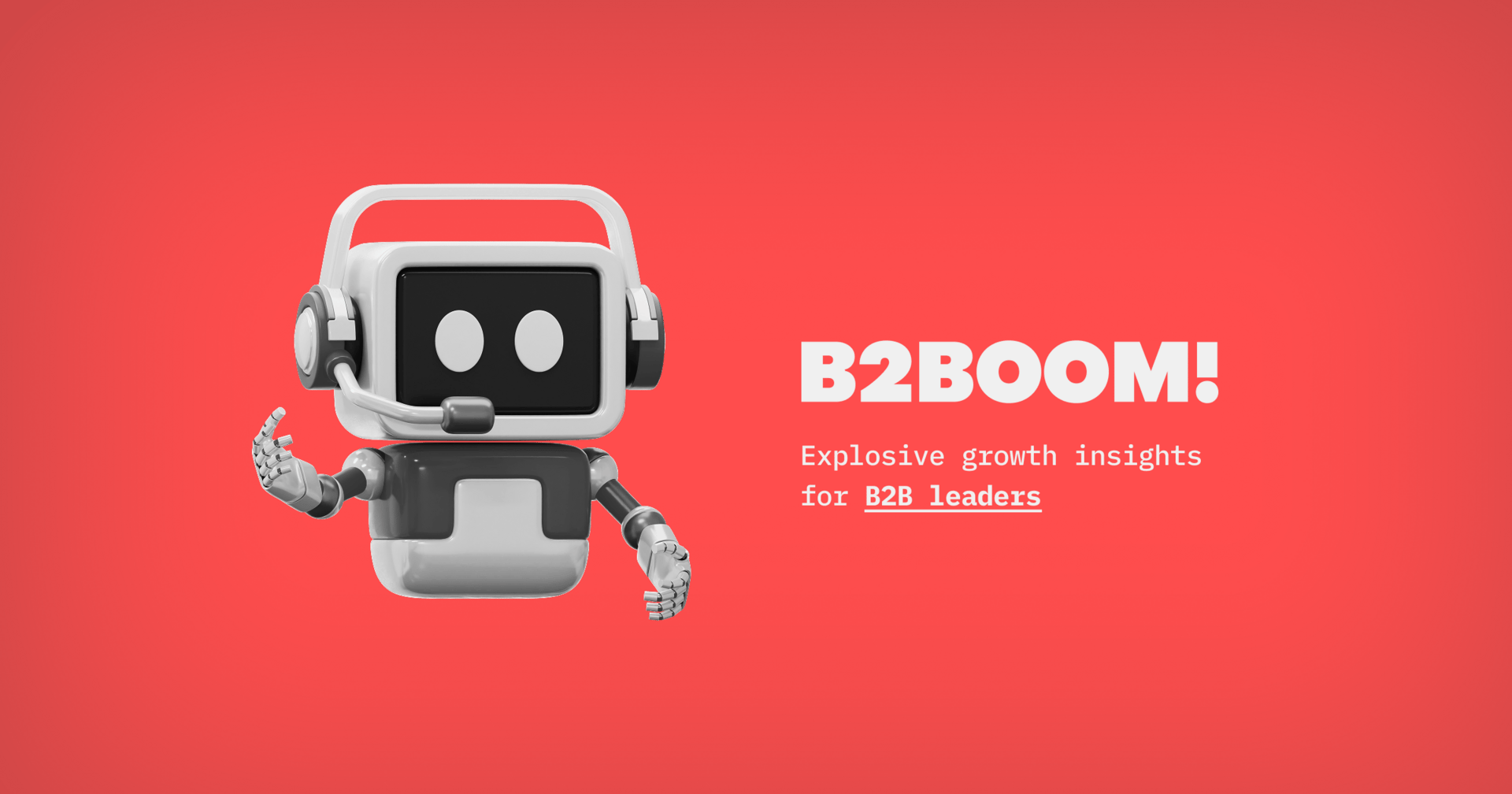Generative and Agentic AI have given us the perfect case study in belief breaking faster than technology advances. The tools are extraordinary, but the trust isn’t. From Dreamforce’s shaky debut to Gartner’s 40-percent failure rate to Anthropic’s focus on context and Raptive’s data on “AI stink,” this issue tracks how confidence, not capability, is now the deciding factor in growth.
Belief has become the bottleneck. And rebuilding it is the next great marketing challenge.
In this issue:
• Agentic AI’s Trust Test
• The 40 percent failure rate of Agentic AI pilots
• Anthropic: Messaging Agentic AI through context
• Devastating: AI-generated content lowers purchase consideration 14%
—Jay & Adam
💼➡️💥
💥 MARKET MOVES:
Agentic AI’s Trust Test: The Demo Landed. The Belief Didn’t.
Last week we said Dreamforce 2025 would be a brand play disguised as a product launch. Salesforce took on the daunting task of asking the enterprise to trust autonomy itself.
This week, that trust looks shakier than ever.
Agentforce 360 arrived with all the polish of a platform debut and the ambition of a new category. As advertised, it was Salesforce’s attempt to redefine CRM around autonomous agents that act instead of assist. Partnerships with OpenAI and Anthropic gave the launch some much needed credibility.
The response, however, has been more polite than passionate.

When hype meets hesitation
Meanwhile, practitioners sounded a similar note. On r/salesforce, conversations like this give a fair reading of the reaction:
“Agentforce is doing a great job of blending declarative tools, LLMs, and workflows.”
“It’s great for automating workflows, but sales conversations are a different beast.”
Another reddit user wrote:
“So sick of all the Agentforce hype when Salesforce can’t even get it … I’ve tried using Agentforce … and it’s never actually given me a useful response.”
It’s the same confidence gap we see in every boardroom right now. The tech keeps advancing faster than belief does. Benioff himself admitted that AI innovation is far exceeding customer adoption, then complicated the trust narrative and bigfooting any positive narratives with headlines about 4,000 support jobs replaced by AI and even “robo-cop” proposals for San Francisco (not great!).
Dreamforce showed that agentic AI can do more, but it didn’t prove that people are ready to let it. The brand promised autonomy, the audience still heard risk.
👉 Takeaway:
Dreamforce exposed what every marketer already knows: innovation only works at the speed of belief.
We have likely witnessed another case of narrative overpowering features and benefits.
🌋 DEMAND & GROWTH:
The 40 percent failure rate of Agentic AI pilots
Gartner says more than 40 percent of agentic AI projects will be scrapped by 2027.
Not because the models don’t work, but because the business cases don’t.

If you thought the old office printer caused frustration…
The hype outpaced the homework
Teams rushed to “get something in market,” layering agents on every process like stickers on a laptop. The result? Escalating costs, no measurable ROI, and a growing trust problem inside the very companies trying to automate trust.
According to Harvard Business Review, most failed deployments were just glorified chatbots in enterprise clothing, advanced interfaces for workflows that didn’t need autonomy to begin with. Real agentic systems need judgment, not just data. Integration, not isolation.
Discipline scales, hype doesn’t
You don’t earn credibility by installing AI. You earn it by solving something that actually matters to the business. Make it faster, cheaper, or smarter than before.
👉 Takeaway:
Agentic AI won’t fail for lack of ability. If it fails, it’ll fail for lack of purpose.
The growth advantage belongs to marketing leaders who treat AI like a business strategy, not a spectacle.
🤝 If your competitors are busy naming features, it’s your cue to define the category.
We help B2B teams build clarity and conviction, the kind that earns trust when everyone else is just echoing buzzwords. Through sharper narrative, tighter positioning, and content that actually signals authority, we make belief your growth engine.
Let’s turn your brand into the one buyers actually believe.
✍️ THE MESSAGING LAB:
Anthropic: Messaging Agentic AI through context
Anthropic’s new Skills for Claude didn’t promise a smarter AI. It promised a situational one. They built it to be composable: stackable bits of expertise that combine to fit any situation.
Many B2B brands aleady do the same thing with their story.

The message: Skills is giving your AI your company’s playbook
The needed shift in agentic AI messaging: alignment
Most of what’s being said about agentic AI still lives in blue-sky territory. Big promises, little proof. At this stage, education matters more than aspiration. Buyers need to understand what this technology actually does.

Verbatim the first comment on the article, and TBH, they nailed it
That’s why features like Claude’s Skills are worth paying attention to. They show what alignment looks like in practice, AI that doesn’t just think, but thinks within your rules. It’s less about dazzling capability and more about dependable context: systems that adapt to your workflows, follow your SOPs, and learn how your organization actually operates.
This is the down-funnel phase of the agentic conversation, where clarity, not hype, moves the market.
👉 Takeaway:
Anthropic is building trust through context, not claims.
Features like Skills work because they show AI acting within a company’s world, rather than promising the world.
What kind of B2BOOM! content would be most helpful for you this quarter?
📊 DATA & INSIGHTS:
Devastating: AI generated content lowers purchase consideration 14%
It’s not the extra fingers or the misplaced eyes anymore. We’ve all seen it. It’s the way too good looking models with flawless skin in perfect lightly. Overzealous use of em dashes. Copy with semicolons in it (who does that?). Call it AI stink. Algorithm aftertaste. It’s a soullessness that we can all perceive even if we’re not entirely sure what it is, similar to the uncanny valley in robotics that makes your skin crawl.
And it’s costing brands real money.

Just one of literally millions of hyper perfect generative images on Adobe. Who could possibly say no to a face like this? Well, around 14% of us apparently.
Raptive’s latest study shows that when audiences even suspect content was made by AI, trust drops by half and purchase intent plunges 14 percent. Ads beside that content take collateral damage, seen as 17 percent less premium and 11 percent less trustworthy. This isn’t about whether AI can write, it’s about whether people believe what they’re reading just from a glance.
👉 Takeaway:
Trust doesn’t erode when content is AI-generated. It erodes when it feels that way.
We’re all using AI to varying degrees. And it’s good to be upfront about how you produce your work. But the work can’t feel like you used AI.
🤝 Your growth engine isn’t stalling, it’s running on low trust.
Buyers are skeptical. Funnels are over-automated. And every AI-driven touchpoint is one wrong tone away from feeling soulless.
We help B2B teams rebuild belief where it’s been lost, aligning brand and demand, sharpening narrative clarity, and creating content that earns confidence, not just clicks.
Let’s make trust your growth engine again.
🔥 FAMOUS TAKE:
AI didn’t create the trust gap, it exposed it.
In the age of agentic systems, your buyers aren’t just asking what it does, they’re asking if they can trust it to decide. The same rule applies to your marketing.
If people don’t believe the story, the system doesn’t matter.
—Jay
Thanks for reading. You could be spending your time anywhere. We’re glad you’re here. 💥
—Jay & Adam
Heads Up: In each issue of B2BOOM!, we highlight services from our crew at FamousFolks or friends we trust. When you see the 🤝, it means we’re sharing something we genuinely back. We only shout out things we believe are truly valuable for your business—no shady promos, just stuff we stand behind.


